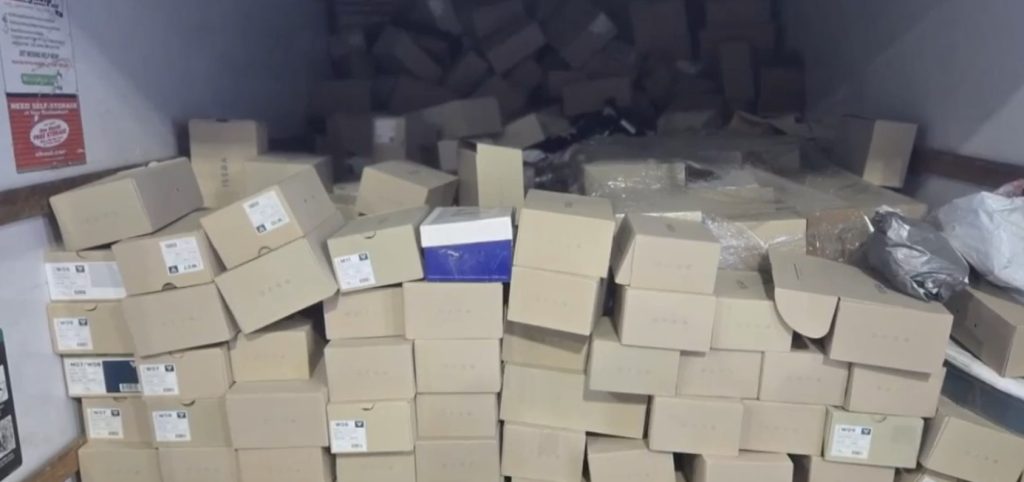Ravaged by war, Middle Eastern countries face a new scourge
Posted March 17, 2020 11:11 pm.
Last Updated March 17, 2020 11:16 pm.
CAIRO — When Dr. Ismail al-Mansouri goes to work in Yemen’s capital, he puts on one of the hospital’s few pairs of medical gloves. Then he enters a cramped clinic teeming with listless patients, many malnourished, some vomiting, others with diarrhea.
Al-Mansouri, a pediatrician, has been struggling for years to battle the rapid spread of otherwise preventable and treatable infections, such as cholera, that have surged in war-ravaged Yemen.
Now as the coronavirus outbreak intensifies in the region, he is faced with a new threat, one he can only hope to ward off with a handful of masks.
“I cannot even speak about our preparedness for the coronavirus,” he said, “because we have none.”
Long-running wars and conflicts across the Middle East have wrecked potential defences against coronavirus outbreaks, leaving millions vulnerable in Yemen, Libya, Syria, Afghanistan, the Gaza Strip and elsewhere. Health care systems have been gutted; war has blasted key infrastructure. Several of the countries are carved up among rival claimant governments, factions or armed groups, snarling any attempt at nationwide protection programs. Hundreds of thousands of people driven from their homes by fighting are crowded in close quarters in tent camps or improper housing.
“We are becoming very worried,” said John Nkengasong, director of Africa Centers for Disease Control and Prevention, as the virus reached conflict-ridden Iraq, Libya, Somalia and the Democratic Republic of Congo. “The impact will be magnified.”
Most patients who contract the new coronavirus develop only mild symptoms and recover after about two weeks. But the virus is highly contagious and can be spread by those with no visible symptoms. For older adults and people with underlying health problems, it can cause more severe illness, including pneumonia.
So far Yemen, Libya, Syria and Gaza have not confirmed any infections. But doctors in many cases believe the virus has arrived and fear that a lack of disease surveillance systems — shortages of tests, basic supplies and properly trained professionals — is allowing an invisible pandemic to spawn.
“We don’t have the testing capabilities, so we can only rely on symptoms and signs. But when I do see symptoms and try to report them, no one does anything. People go home, they go out, walk around, eat in restaurants,” said Dr. Wejdan Sabri, an orthopedic doctor outside Libya’s capital, Tripoli. “I can say with certainty that those likely carrying the virus have continued their lives as normal, passing it to family members and others on the street.”
Sabri is one of two volunteer doctors tasked with infectious disease control for the 2.3 million people in Tripoli, which has been a battleground for warring militias. She said she has seen at least seven patients in the last few days with the signature symptoms of coronavirus. She could only advise them to stay home or visit the central lab in Tripoli, where Libya’s few dozen tests can be found. Many of her patients shun testing, fearing quarantine. “They think they’ll go to an isolation unit and die.”
Protective gear across Libya is sparse. A trauma doctor at Tripoli central hospital said 15 surgeons on his night shift share one mask. The main respiratory diseases facility in the east, near the city of Benghazi, has only eight intensive care beds, 10 ventilators and a quarantine room for two.
“We are doing our best but of course it is not enough,” said its director, Dr. Anas Albarghathy. Last weekend, doctors there found they didn’t have the equipment to assemble tests for three patients who had just arrived from Iran, Egypt and Great Britain with fevers and dry cough.
In Yemen, doctors fear that raging war and a humanitarian crisis will only exacerbate the difficulties of determining chains of infection and containing the virus. The country, divided between a rebel-held north and government-run south, has already struggled to stop repeated cholera outbreaks that have infected more than 2 million people and killed nearly 4,000 since 2016.
In Taiz, one of the country’s largest cities, Dr. Abdul Rahman al-Azraqi estimated that 80% of the city’s hospitals and clinics had been shattered by the war and ongoing siege.
He described the situation in his hospital bluntly: “There is no training. There is no quarantine. We do not have tests for patients we suspect.”
The World Health Organization has identified two facilities in the country of 29 million people for quarantine and diagnosis, which local director Atlaff Musani acknowledged would soon become “grossly insufficient.” One, in the rebel-held capital of Sanaa, has the capability to carry out only 200 tests; the other, in the southern city of Aden, can test roughly 300 specimens.
“People are scared because they know the government is not prepared,” said Dr. Mohamed Rabid, deputy director of the Aden’s health office, lamenting that hospitals across the country are desperate for gloves, goggles, ventilators, medicines and other supplies.
Concerns have compounded as the virus sweeps across poorly patrolled borders. Iran, which has emerged as the regional epicenter of the outbreak, frequently sends military advisers and Shiite religious pilgrims to Syria. All 21 confirmed cases in Afghanistan travelled from neighbouring Iran. Oil workers circulate between Libya and Italy, a major centre of contagion. Thousands of migrants cross Libya’s southern frontier, which Elizabeth Hoff, the country’s World Health Organization representative, called “a serious vulnerability that we can’t really do anything about.”
In the Gaza Strip, medical infrastructure has been strangled by a 13-year blockade imposed by Israel with Egypt’s help, preventing the passage of even critical goods like surgical supplies. While Israel has closed its border crossing, it continues to allow serious medical cases through. Gaza’s testing capacity remains severely limited, with enough to process 150 samples. Israel has delivered an additional 200 tests.
In Syria, where nine years of devastating war have left infrastructure and health facilities in shambles, President Bashar Assad’s government has conducted 103 coronavirus tests thus far in the country’s sole laboratory, which came back negative. Social distancing proves a monumental task in unsanitary refugee camps jam-packed with hundreds of thousands of displaced Syrians.
In Afghanistan, which shares a large border with Iran, Health Minister Ferozuddin Feroz described a growing capacity to test suspected cases at the country’s only functioning laboratory, with 30,000 more kits arriving soon. “We are not in a normal situation,” Faroz told reporters Monday. “We are faced with a national threat.”
In Gaza and Benghazi, authorities scrambled to set up new hospitals to handle a possible influx of patients. In Tripoli, Prime Minister Fayez Sarraj announced the allocation of some $360 million to prevent the spread of the virus. Dr. Sabri, the Libyan orthopedic, says she won’t get a full night’s sleep for a while as she stages awareness campaigns and frantically trains inexperienced nurses in basic sanitation.
Officials in Yemen and Libya offered reassurances this week that things were under control. But not everyone sees it that way.
“People are terrified,” said al-Mansouri, the Yemeni pediatrician. “May God protect us.”
____
Associated Press writers Fares Akram in Gaza City, Gaza Strip; Zeina Karam in Beirut; and Rahim Faiez in Kabul, Afghanistan contributed to this report.
Isabel Debre, The Associated Press








